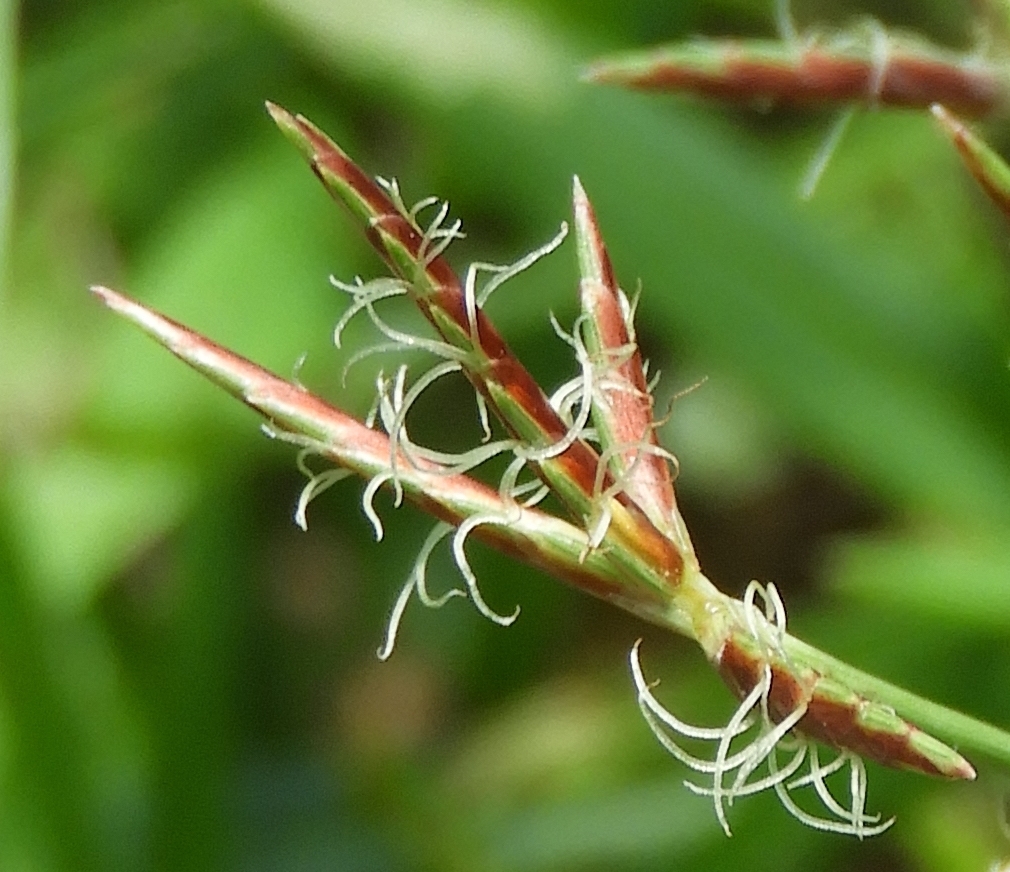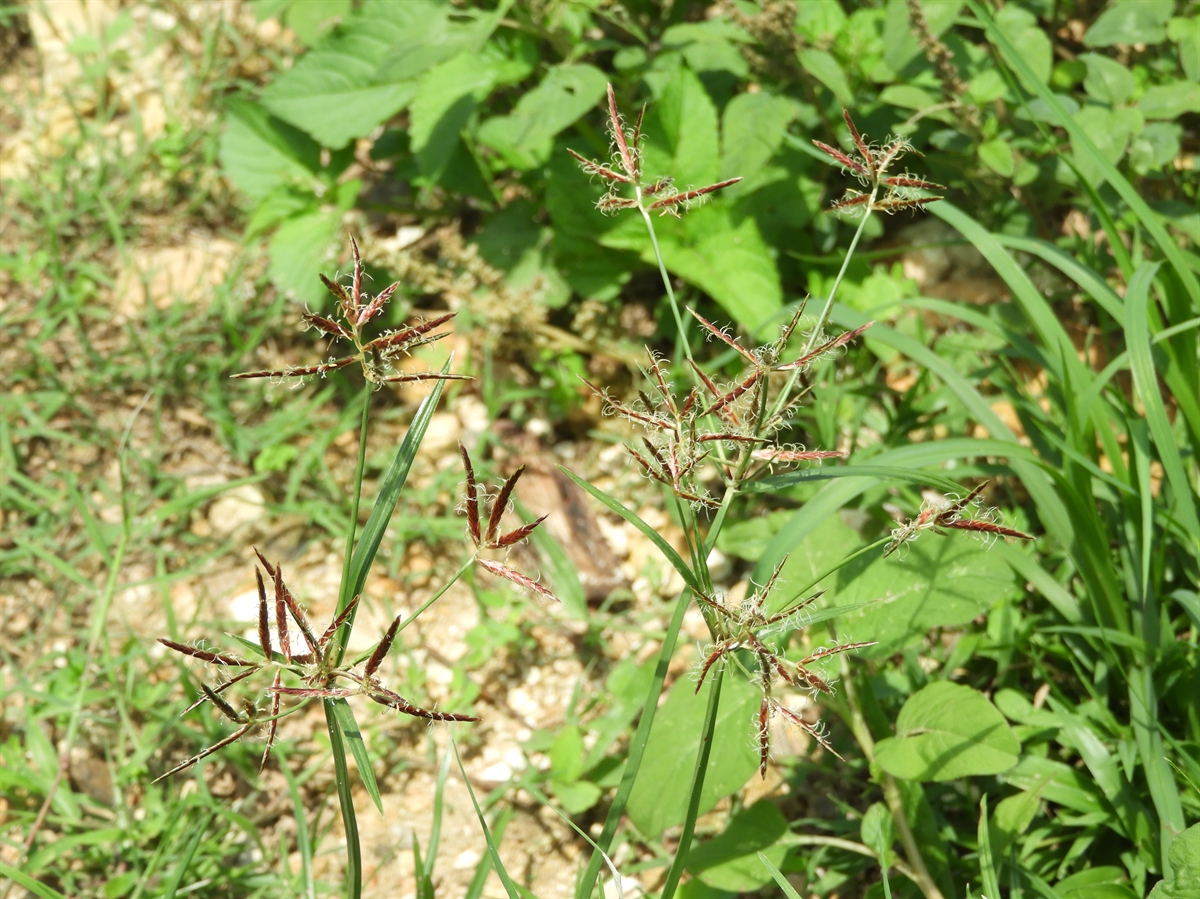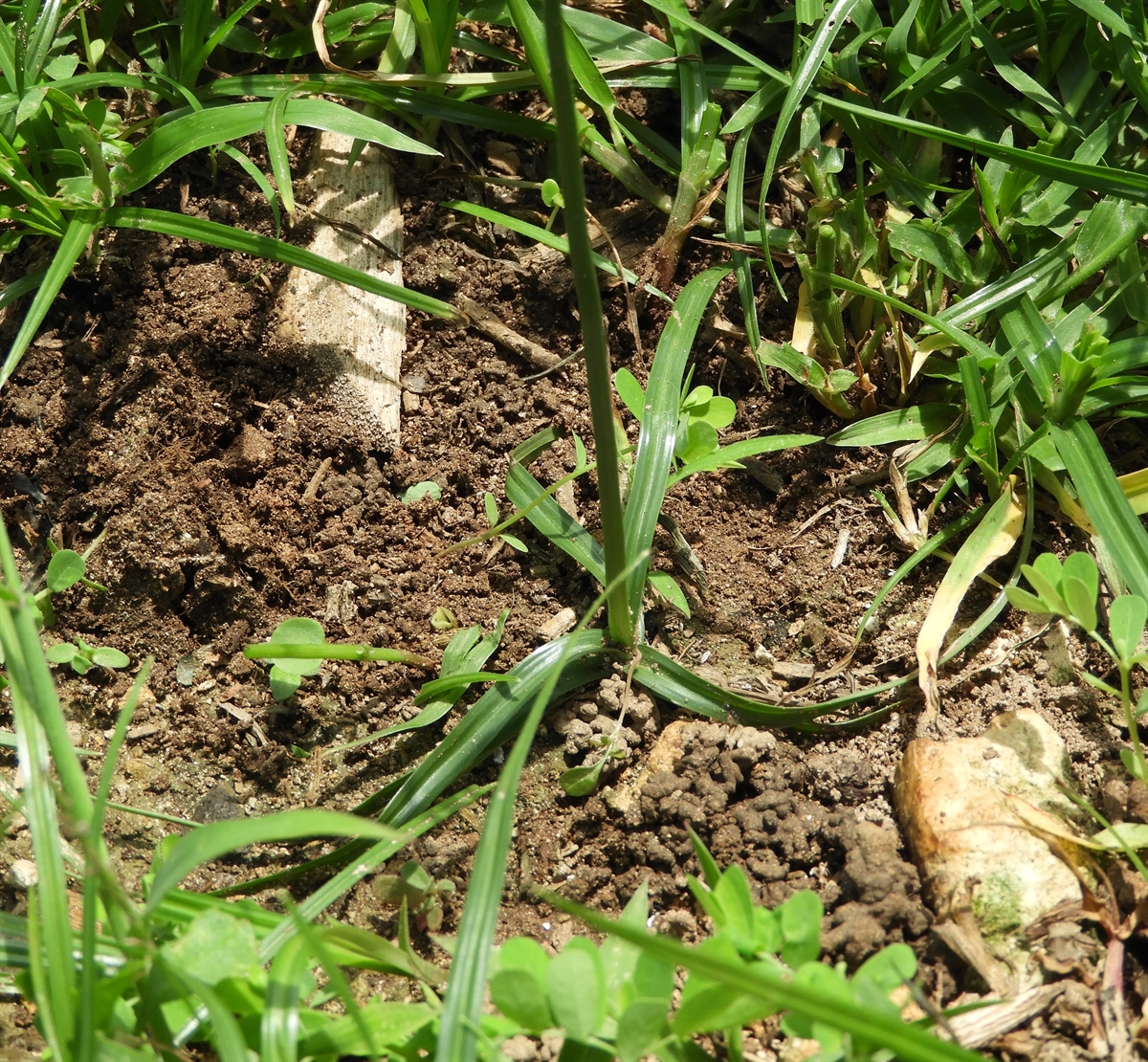Habit: Cyperus rotundus grows as a rhizomatous, tuber forming, perennial herb to 75 cm in height when in flower, with a triangular stem. The leaves primarily as a basal rosette and are arranged alternately, parallel veined, to 30 cm in length and 7 mm wide with an acuminate leaf apex and a scabrous margin. The leaf sheath may be reddish brown.
The incomplete, perfect flowers are arranged in a cluster of 3-8 spikelets in an umbel like corymb. The reddish brown spikelets are at the end of a triangular shaped peduncle and are subtended by 3-4 leaf like bracts. The flattened spikelets are brown at maturity. Each individual flower in the spikelet is subtended by a v-shaped bract. There is no calyx or corolla. There are 3 stamens. The ovary is superior with a single locule with a 3-lobed style. The fruit is a triangular achene at maturity.
Habitat: Cyperus rotundus grows in wet and dry Human Altered environments (yards, ditches and roadsides, old fields).
Distribution: Cyperus rotundus is NOT native to the Lucayan Archipelago but occurs throughout the islands. It is native to Europe, Africa, the Middle East, Asia, South Pacific and Australia. It now occurs as non-native weed throughout the Caribbean, North, Central and South America.
Medicinal/Cultural/Economic usage: Cyperus rotundus is not known to be used medicinally in the Lucayan Archipelago. It has been used medicinally in India and China.
The starch filled tubers are edible.


